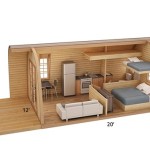The Fall of the House of Usher: Lesson Plans
Edgar Allan Poe's "The Fall of the House of Usher" is a classic of gothic literature, renowned for its unsettling atmosphere, psychological depth, and haunting imagery. Teaching this story can be a rewarding experience for students, fostering critical thinking, literary analysis, and an appreciation for the enduring power of the gothic genre. This article outlines lesson plans for engaging with "The Fall of the House of Usher" in the classroom, incorporating various pedagogical approaches to maximize student learning.
Understanding the Gothic Elements
The first step in understanding "The Fall of the House of Usher" is to explore its gothic underpinnings. This element sets the stage for the story's themes, atmosphere, and overall impact. Begin by discussing the key characteristics of gothic literature: dark and mysterious settings, supernatural elements, psychological decay, themes of isolation and fear, and a strong emphasis on atmosphere. Students can then analyze how Poe utilizes these elements in his story, noting specific examples of each feature.
For instance, the crumbling mansion, Roderick Usher's deteriorating mental state, the unsettling atmosphere, and Madeline's seemingly supernatural reappearance all contribute to the story's gothic nature. Encourage students to identify the specific literary devices Poe employs to create a sense of dread and suspense, including imagery, symbolism, and figurative language. This activity helps students understand how the gothic genre works and how it contributes to the overall meaning of the story.
Exploring the Themes of "The Fall of the House of Usher"
After analyzing the gothic elements, it's crucial to delve into the story's deeper themes, which provide insights into the human condition. Some central themes include:
- The Decay of the Human Psyche: Roderick Usher's fragile mental state serves as a focal point for exploring the theme of psychological decay. Students can analyze Roderick's descent into madness, considering factors such as isolation, familial burden, and the influence of his environment.
- The Power of the Supernatural: The story's supernatural aspects, including Madeline's reanimation, raise questions about the nature of reality and the existence of forces beyond human comprehension. Discuss the various interpretations of these events, examining whether they are purely psychological or have a more metaphysical dimension.
- The Nature of Art and Creativity: The story explores the relationship between art and the artist. Students can analyze Roderick's artistic pursuits (painting, music) through the lens of his deteriorating mental state. How does Roderick’s art reflect his internal struggles? How does the narrator’s perception of Roderick's art change as the story unfolds?
- Isolation and Entrapment: The setting of the story – the isolated mansion, surrounded by a bleak landscape – contributes to the theme of entrapment and the suffocating effects of isolation. How does the physical setting contribute to Roderick’s mental deterioration, and how does it mirror the narrator’s own feelings of entrapment?
Through interactive discussions and group activities, students can explore these themes on a deeper level. Encourage critical thinking by asking questions about the characters' motivations, the symbolism of specific objects and events, and the broader implications of the story’s themes.
Engaging with "The Fall of the House of Usher" through Creative Activities
To foster student engagement beyond traditional methods, consider incorporating creative activities that allow students to express their understanding of the story in different ways:
- Visual Representations: Have students create visual representations of the story, including illustrations, collages, or even short films. This activity encourages them to visualize the setting, characters, and atmosphere of the story in their own unique ways.
- Creative Writing Prompts: Encourage students to explore different perspectives by writing from the viewpoint of different characters. For example, they could write from Madeline’s perspective, the narrator’s perspective after escaping the Usher mansion, or even from the perspective of the house itself.
- Modern Interpretations: Ask students to adapt the story to a modern setting, exploring how the themes of isolation, psychological decay, and the supernatural can be interpreted in contemporary contexts. This activity challenges students to think critically about the story's enduring relevance.
- Role-Playing Activities: Have students engage in role-playing exercises, interpreting scenes from the story and discussing the characters' motivations and choices. This activity encourages students to think critically about the characters’ actions and engage with the story on a deeper level.
By engaging in these creative activities, students can actively participate in the learning process, develop their critical thinking skills, and make deeper connections to the story’s themes and ideas.

The Fall Of House Usher Lesson Plan Gothic Lit Ysis

The Fall Of House Usher Lesson Plan Edgar Allan Poe Plot Diagram

Characterization In The Fall Of House Usher

The Fall Of House Usher By Edgar Allan Poe Part One

Edgar Allan Poe Reading Worksheet The House Of Usher

The Fall Of House Usher Traits Gothic Literature

Roderick Usher Overview Ysis Lesson Transcript Study Com

Storyboard That Is Perfect For Creating Oscar Character Map Graphic Organizers Try It Today With Edgar Allan Poe S The Fall O Literature Gothic Fiction Usher

The Fall Of House Usher By Poe Summary Theme Ysis Lesson Transcript Study Com

The Fall Of House Usher Traits Gothic Literature








